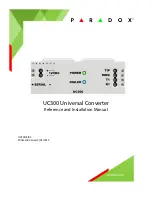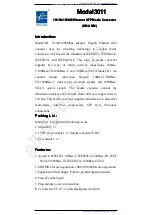
High cycle Generator
Manual
8
GENERAL
SAFETY
∆ Store fuel in appropriate containers, in well- ven-
tilated areas and away from sparks and flames.
∆ NEVER use fuel as a cleaning agent.
TRANSPORTING
∆ ALWAYS shut down engine before transporting.
∆ Tighten fuel cap securely and close fuel cock to
prevent fuel from spilling.
∆ ALWAYS use proper lifting techniques when
using or moving the machine assembly.
∆ Contact your country’s Department
of Public Works or recycling agency
in your area and arrange for proper
disposal of any electrical compo-
nents, waste or oil associated with
this equipment.
∆ When the life cycle of this equipment is over,
remove battery (if equip) and bring to appro-
priate facility for lead reclamation. Use safety
precautions when handling batteries that
contain sulfuric acid.
∆ When the life cycle of this equipment is over,
it is recommended that the unit frame and
all other metal parts be sent to a recycling
center.
Metal recycling involves the collection of
metal from discarded products and its trans
formation into raw materials to use in many
Manufacturing a new product.
Recyclers and manufactures alike promote the
process of recycling center promotes energy
cost savings.
EMISSIONS INFORMATION
∆ DO NOT smoke around or
near the equipment. Fire or
explosion could result from
fuel vapors or if fuel is spilled
on hot engine.
Decommissioning is a controlled process used to
safely retire a piece of equipment that is no longer
serviceable. If the equipment poses an unaccept-
able and unrepairable safety risk due to wear or
damage or is no longer cost effective to maintain
(beyond life-cycle reliability) and is to be decommis-
sioned (demolition and dismantlement), be sure to
follow rules below.
∆ ALWAYS observe all applicable compulsory reg-
ulations relevant to environmental protection,
especially fuel storage, the handling of hazard-
ous substances, and the wearing of protective
clothing and equipment. Instruct the user as a
necessary, or, as the user, request this informa-
tion and training.
∆ ALWAYS Dispose of hazardous waste properly.
Examples of potentially hazardous waste include
used motor oil, fuel, and fuel filters.
∆ DO NOT use food or plastic containers to dis-
pose hazardous waste.
∆ DO NOT pour waste or oil directly onto the
ground, down or drain or into any waste source.
The gasoline engine used in this equipment has
been designed to reduce harmful levels of carbon
monoxide (CO), hydrocarbons (HC) and nitrogen
oxides (NOx) contained in gasoline exhaust emis-
sions.
This engine has been certified to meet US EPA
Evaporative emission requirements in the installed
configuration.
Attempting to modify or make adjustments to the
engine emission, system by unauthorized per-
sonnel without proper training could damage the
equipment or create an unsafe condition.
Additionally, modifying the fuel system may ad-
versely affect evaporative emissions, resulting in
fines or other penalties.
EMISSION CONTROL LABEL
The emission control label is an integral part of the
emission system and is strictly controlled by regula-
tion(s).
The label must remain with the engine for its entire
life.
If a replacement emission label is needed, please
contact your authorized Honda Engine Distributor.
If Applicable....
DO NOT USE TOOL IF IT IS IN NEED OF SERVICE!









































